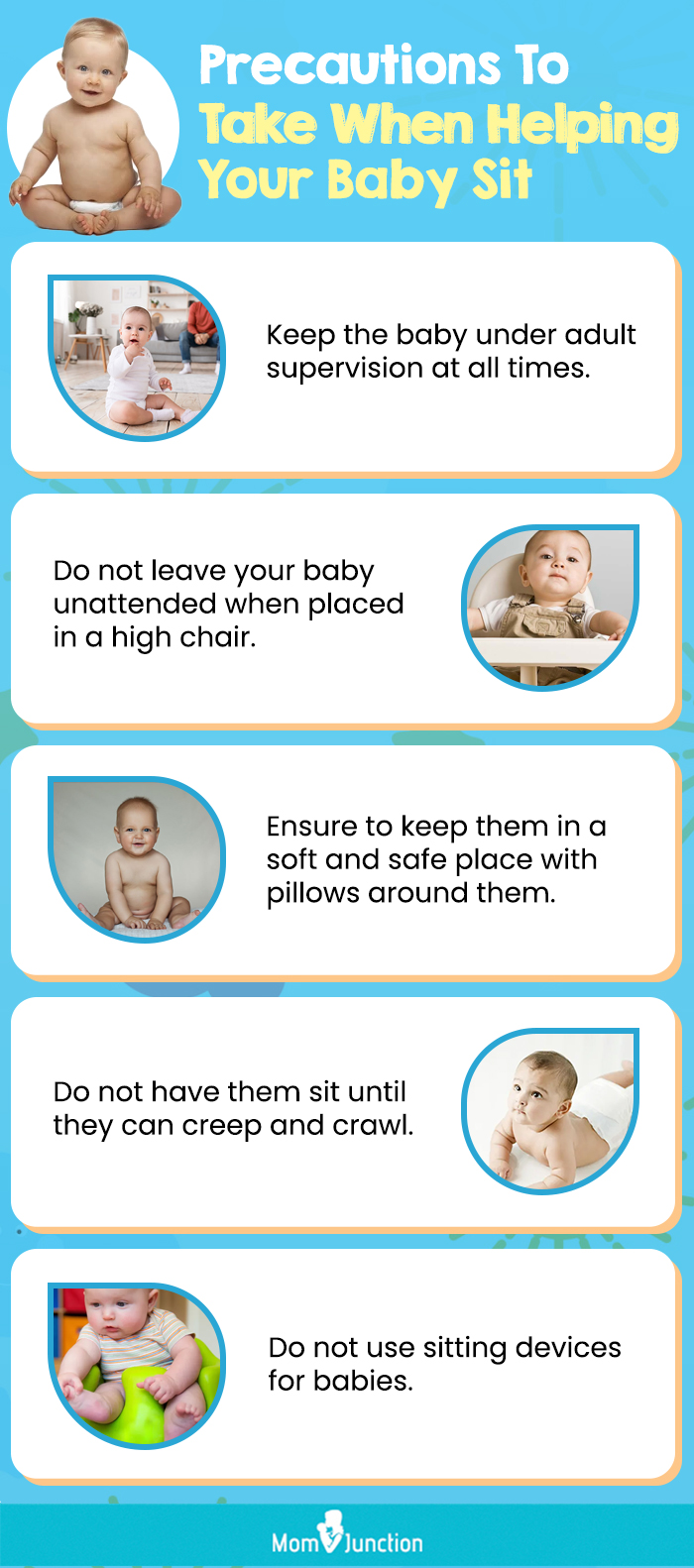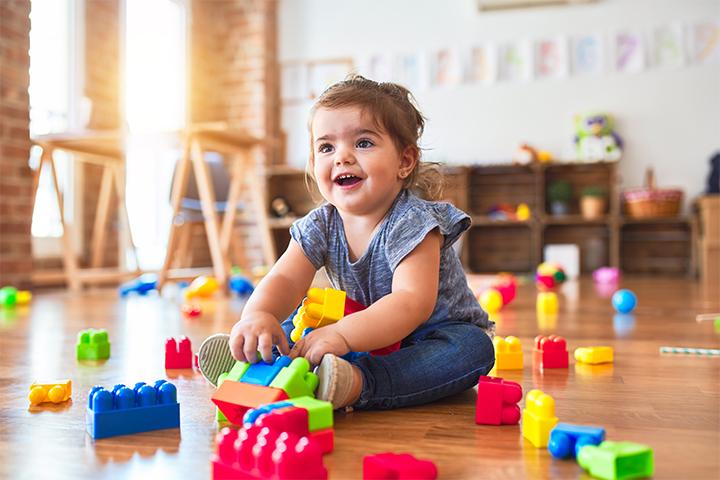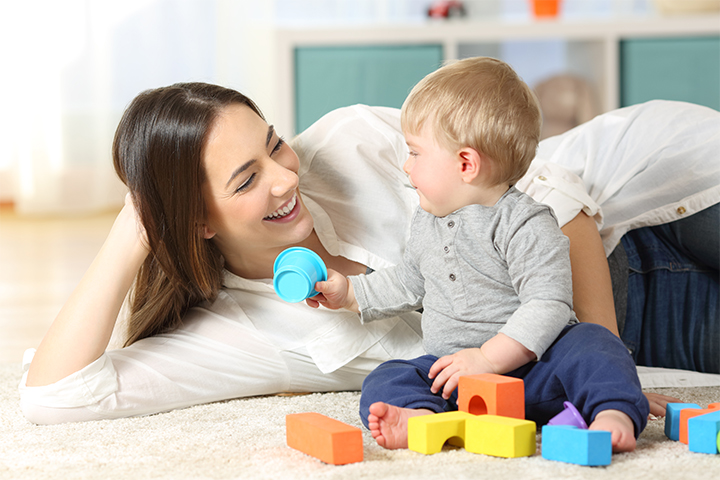
Babies achieve various developmental milestonesi during the first year of life. However, since sitting upright is one of the most noticeable physical developmental milestones in babies, many parents may wonder, “when does a baby sit up?”
Although most babies can sit with support in early infancy, sitting upright without support requires significant skill development. It may also indicate that your baby is stepping toward achieving other milestones.
Read on to know when a baby sits up without support, the signs of readiness, how to encourage them, and when to seek a doctor’s attention.
When Does A Baby Sit Up On Their Own?
Babies can sit without support at six months and get into a sitting position by themselves by nine months (1). The baby will achieve several milestones before this ability. The achievement of other physical development milestones at different ages indicates that the baby will gradually learn to get into a sitting position.
 Do remember
Do rememberSigns Your Baby Is Ready To Start Sitting Up
Below are the various developmental milestones and signs at different ages indicating that your baby will gradually be ready to sit up independently (2).
- Two months: Holds the head up and uses arms to push the ground when on the tummy.
- Four months: Holds head unsupported and may roll from tummy to back.
- Six months: Rolls in both directions and sits without support.
- Nine months: Stands while holding objects and can get into a sitting position.
How Does Sitting Up Help In Your Baby’s Development?
The process of sitting requires a complex interaction of your baby’s brain, nerves, muscles, and joints to allow them to balance the body in that position. Therefore, sitting prepares the muscles, bones, and joints for subsequent physical development
Research has noted that sitting requires complex postural control by the central nervous system. The ability to get into a sitting posture could indicate maturation of the various regions and functions of the brain and spine (3). A mature brain is vital for the achievement of other developmental milestones. Thus, a healthy ability to sit may also affect other abilities, including non-physical ones, such as cognitivei growth and development.
How To Teach Babies To Sit Up?
Most babies attain the skill on their own, and there may be no way to teach it. However, parents may support and encourage the baby’s physical abilities to ensure they reach milestones, such as sitting, on time.
- Encourage tummy time: Tummy time is one of the earliest exercises for your baby. It helps strengthen your baby’s back, shoulder, and core muscles. Tummy time could assist your baby in achieving milestones, such as rolling, sitting, crawling, standing, and walking, in a timely way (4).
- Support your baby’s back: Babies can be made to sit with support like a cushion from the age of four months. Give them plenty of sitting time by supporting their back. You can place toys around your baby or read to them to keep them engaged during this time.
 Quick tip
Quick tip- Let your baby sit: Encourage a six-month-old to sit without support for a few minutes each day. Sitting without support could strengthen their muscles. Place your baby on the floor with their hands in front of their legs. It will help them use their arms and legs to achieve a stable balance (5). You may place a few toys around them. Your baby will learn to balance the body as they try to grab the toys (6).
Amber, a mother of three from Dallas, Texas, records her twin babies’ six-month milestone on her blog. She notes, “Jolie isn’t as strong as Parker when it comes to sitting up on her own, but she is getting much better with practice every day. She spends more time on the move than Parker, that’s for sure. I do think that when Parker finally masters the roll from back to tummy, she will be ready to crawl in no time. Jolie has been attempting the arm/leg coordination for about 2 weeks now, and I don’t think it will take Parker that long to figure it out once she gets there. For now, she adores her momma and sitting in my lap is where she is most content (i).”
Precautions To Take When Helping Your Baby Sit
The following precautions could help make getting into a sitting position a safer experience for your infant (7).
- Stay close to your baby when they begin to get into a sitting position since they may wobble initially and might require support.
- You may place the baby on a soft surface, such as a mattress or couch, or place pillows around them. It could insulate their falls during the initial phase.
- Do not leave the infant unattended even if they have adequate support from a high chair or crib.
- Avoid using sitting devices since they may not offer sufficient grip or support and may also be unsafe. It is best for the baby to practice sitting on the floor.
 Do remember
Do rememberWhat If The Baby Does Not Sit?
Each baby is different and may achieve developmental milestones at a slightly different age. If your baby does not get into a sitting position by the age of nine months, wait for a month. If your baby does not achieve the milestone by the tenth month, you may consult a doctor.
In most cases, the baby will achieve the milestone eventually, especially if they have achieved their previous physical development milestones. If your baby has a history of developmental delay or you notice developmental regressioni, consult your doctor promptly.
What Milestones Come After Sitting Up?
Once your baby has learned to sit, you may look forward to the following milestones (1).
- Crawling and scooting on the floor
- Pulling to stand up
- Standing without support
- Walking while taking support of objects (Cruising)
- Walking without support
When can babies sit up without support? This is important for parents to know as sitting indicates a major developmental milestone. They usually attain a sitting position by themselves around nine months. You may facilitate this achievement by encouraging tummy time, making them sit with support from four months and without support after six months. However, make sure the child is never unattended while practicing these skills to avoid injury. Feel free to consult a doctor if your baby cannot get into a sitting position even after ten months.
Infographic: Keep Your Baby Safe When They Are Learning To Sit
Helping your baby sit up is an exciting milestone during their growth and development, but taking precautions to keep them safe and avoid injury is essential. The following infographic outlines the necessary precautions to take when helping your baby sit up. Be mindful of these points as you enjoy watching your baby grow.

Illustration: Momjunction Design Team





